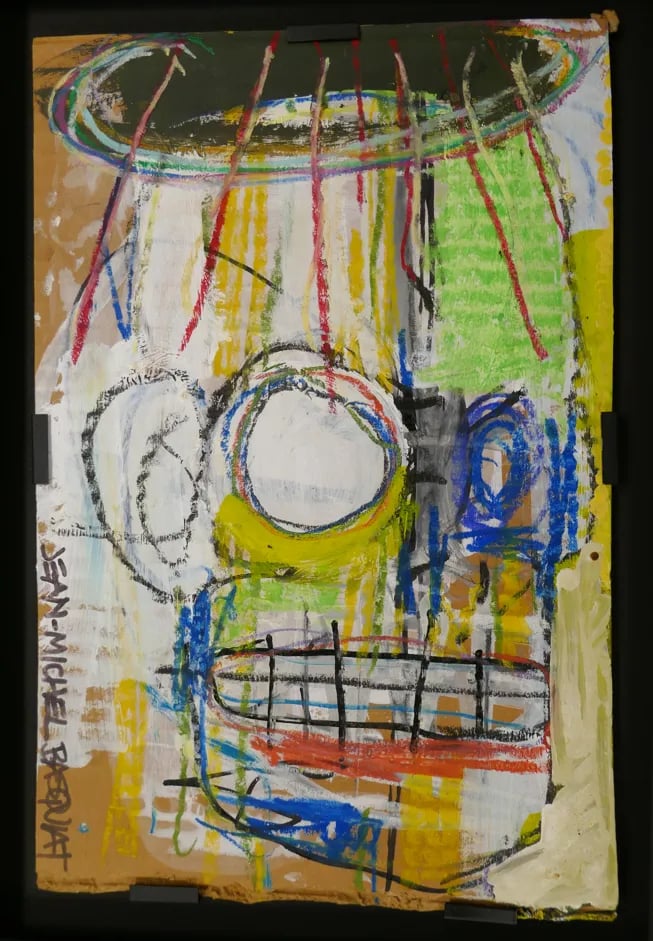Los Angeles auctioneer Michael Barzman confessed to creating a suite of 25 Jean-Michel Basquiat forgeries that wound up at the Orlando Museum of Art (OMA), where the FBI dramatically seized the contraband artworks during the final days of a blockbuster exhibition last June. But the 45-year-old won’t go to jail for his role in the scandal that rocked the art world.
Instead, a U.S. District Court judge has sentenced Barzman to 500 hours of community service and a $500 fine, plus three years’ probation, reports the New York Times.
That’s the sentence sought by the prosecutors, who seem to have been sympathetic to the defendant. Barzman “had a difficult life, physically and emotionally,” and his “struggles with substance abuse and financial difficulties likely contributed to some of the unfortunate decisions he made,” prosecutors said, according to court records.
Barzman is “ashamed and embarrassed” and “is never going to reoffend,” the auctioneer’s lawyer, Joel C. Koury, wrote in a sentencing memo.

Michael Barzman has pled guilty to lying to the FBI about not making the fake “Basquiat” paintings the seized from the Orlando Museum of Art. Photo from the Michael Barzman Auctions website.
Struggling with medical debt after decades of treatment for bone cancer, Barzman decided to create the ersatz Basquiat paintings in a moment of desperation back in 2012, hoping to make a quick buck on eBay. He and an accomplice, identified only as J.F., dashed off the forgeries quickly, spending between five and 30 minutes on each cardboard painting.
The works’ invented provenance stemmed from Barzman’s business buying and selling the contents of abandoned storage lockers. Earlier that year, he had purchased objects from the storage unit of a prominent Black television screenwriter, Thad Mumford. Basquiat had spent time in Los Angeles in 1982. So the story became that the two men had met, Mumford bought the paintings for $5,000, and left them in storage for the next 30 years.

A fake Jean-Michel Basquiat the FBI seized from the Orlando Museum of Art. Michael Barzman has confessed to creating the forgeries, and will pay a $500 fine and serve three years probation for making false statements to the FBI about the forgeries. Photo courtesy of the United States Attorney’s Office Central District of California.
The forgeries found a buyer in William Force and his financial backer, Lee Mangin, who purchased the lot for $15,000. The duo and their partners, including lawyer Pierce O’Donnell, spent the next 10 years trying to prove the works’ authenticity—even as Mumford, who died in 2018, denied ever having met Basquiat or purchasing his art.
But while some experts did find the paintings convincing, there were at least two pieces of damning evidence revealing their illicit origins. On one of the cardboard panels, there was a visible FedEx logo that the company didn’t begin using until 1994. In another, you could make out a mailing label with Barzman’s name and address—even though he would have been four years old and living elsewhere at the time of the painting’s purported creation.

A fake Jean-Michel Basquiat the FBI seized from the Orlando Museum of Art. Michael Barzman has confessed to creating the forgeries, and will pay a $500 fine and serve three years probation for making false statements to the FBI about the forgeries. Photo courtesy of the United States Attorney’s Office Central District of California.
After the FBI raided the OMA, the agency interviewed Barzman about the paintings. In August and October of 2022, he denied having painted the forgeries, but ultimately confessed to his role in their creation.
Charged with making false statements to the FBI, the auctioneer entered a guilty plea in April.
Last week, the OMA filed a lawsuit against Force, Mangin, and others involved in the marketing of the works, including its former director, Aaron De Groft. (The museum fired De Groft in the days following the FBI raid.) De Groft and the artworks’ owners still stand by the work’s authenticity, and have stated they do not believe Barzman’s confession.
Follow Artnet News on Facebook:
